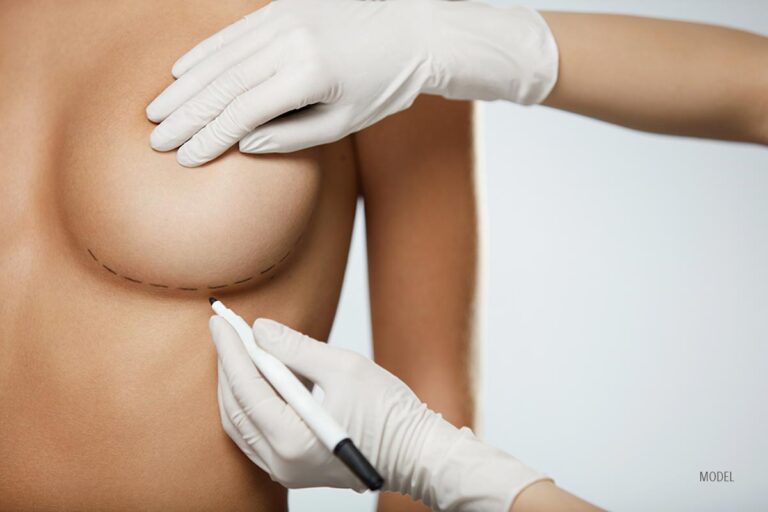
Patients are asking for softer shapes—not just size
It’s not all about volume anymore. Many women now ask for balance, not exaggeration. The goal isn’t to look operated on—but to look like yourself, only smoother. Natural projection. Softer curves. Implants that fit the body, not fight it. Surgeons hear the same phrase often: “I don’t want people to notice—I just want to feel like me.”
This shift has changed how breast aesthetics are approached. Placement matters more than before. So does profile, proportion, and how the breast moves. Patients care less about cup size—and more about harmony with their body shape.
Size is no longer the headline. Subtlety is.
Fat transfer is becoming more than an add-on
In the past, fat grafting was used to smooth edges. Or adjust shape around implants. Now, it’s becoming a full alternative. Some women skip implants entirely. They choose fat from their own body. Harvested through liposuction. Purified. Re-injected into the breasts.
The result is gentle. Not dramatic. But for the right patient, it creates natural fullness without synthetic material. It ages with the body. It feels real—because it is. There’s no scar from insertion. No implant to monitor. Just your own tissue, moved with purpose.
This approach is growing fast. Especially among those looking for modest change, not transformation.
Internal bra techniques offer more support with less sag
Aging, pregnancy, weight loss—they all stretch the skin. Traditional lifts help. But newer internal support methods are changing how long results last. Surgeons now place mesh-like material under the skin. It acts like an internal bra. Holding shape. Supporting tissue. Reducing long-term sagging.
This trend is especially useful during combination surgeries. Augmentation with lift. Or revision surgeries after implant removal. The internal support creates longer-lasting structure. Without visible support on the surface.
It’s hidden strength. And it’s shifting how surgeons think about aging breasts.
Smaller implants with more lift are replacing bigger, heavier trends
Large, high-profile implants once defined breast surgery. But that’s fading. Many patients now ask for smaller implants. Paired with a lift. Or placed under the muscle for a subtler slope. The goal is elegance, not exaggeration.
Lighter implants reduce risk of sag over time. They look less rigid. They fit more comfortably into athletic or slim frames. And when combined with shaping techniques, they offer results that last—without shouting.
Less is becoming more.
Explant surgery is no longer rare—it’s a movement
More women are choosing to remove implants altogether. Not out of regret—but from a desire for simplicity. They seek comfort. Or reconnection with their body. Or a different phase of life. Explant surgery, once rarely discussed, is now openly shared online.
Surgeons respond with skill sets that go beyond removal. They reshape tissue. Preserve volume when possible. Use fat grafting to soften the transition. Explant isn’t about erasing the past—it’s about making peace with change.
The conversation around breast aesthetics is no longer linear. It evolves with life.
Implant technology is advancing behind the scenes
Newer implants are made with more stable gel. Fewer ripples. Softer edges. More responsive textures. They look more natural—and feel more natural. The focus now is not just size, but how the implant behaves in motion. How it settles. How it lasts.
Some are even designed with safety in mind—structured to hold shape even if damaged. With textured options becoming less common, smooth and ergonomic shapes are becoming standard. These changes may not be visible from the outside—but they make a difference inside.
A better implant starts with better engineering.
Scar placement and surgical technique are becoming more refined
No one wants obvious scars. Surgeons now work with smaller incisions. Better closure techniques. More strategic placement. Inframammary folds. Around the areola. In the axilla. Healing protocols have improved too—reducing thickness, redness, and tightness.
Even lifts, which traditionally left more scarring, are now done with refined tools and tailored markings. The goal isn’t just what the breast looks like—it’s how the skin tells the story later.
Less visible healing. More confident results.
Breast aesthetics now include symmetry, posture, and motion
Patients aren’t just looking at front-facing selfies. They’re watching how they move in mirrors. In video. In clothing. Surgeons now study posture. Shoulder position. How one side moves compared to the other. Breasts aren’t isolated—they’re part of the whole frame.
New techniques correct subtle imbalances. Support posture. Match slope and sway. The result looks more natural because it works with your body, not against it.
A beautiful breast is one that feels like it belongs—everywhere.
